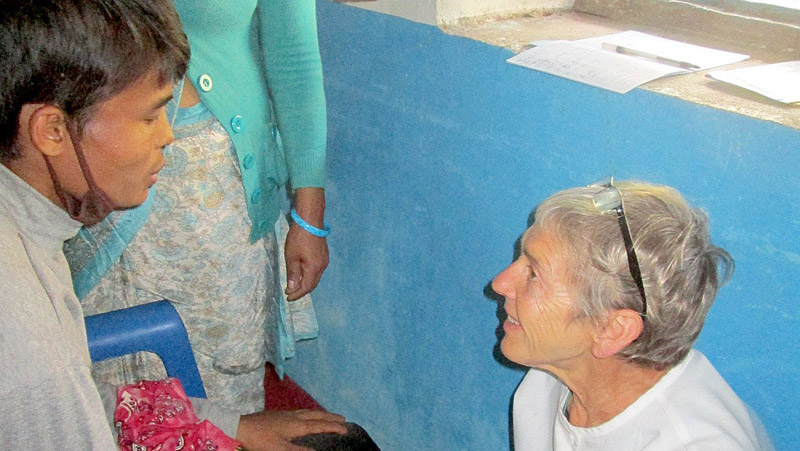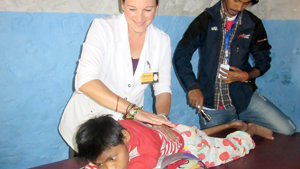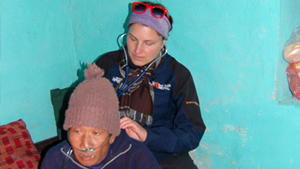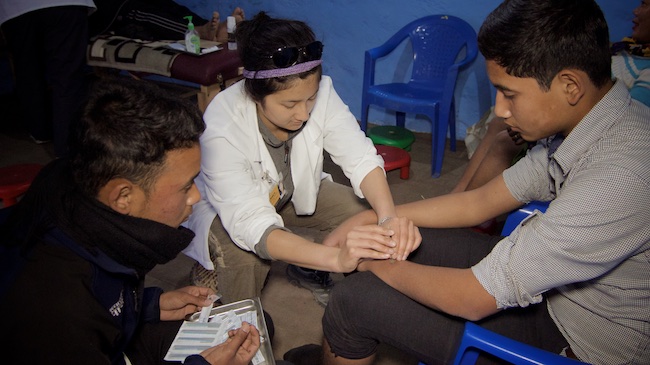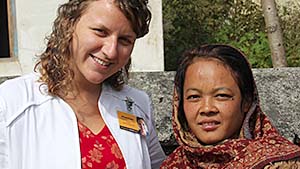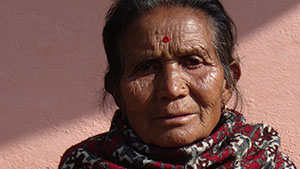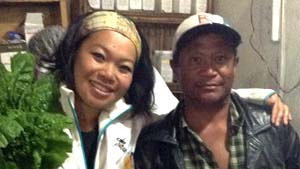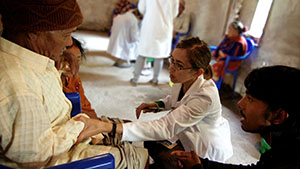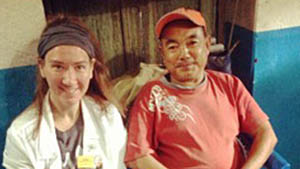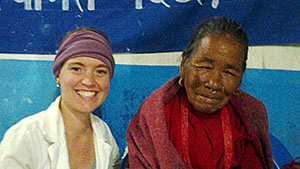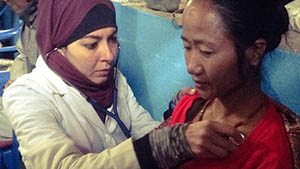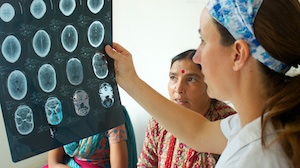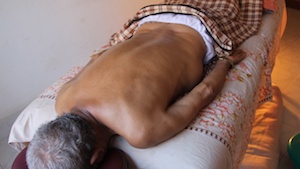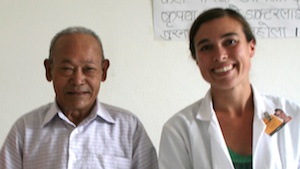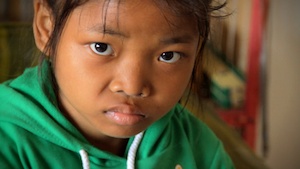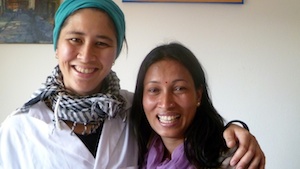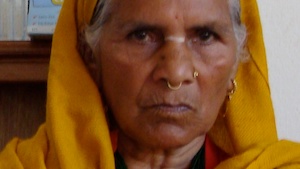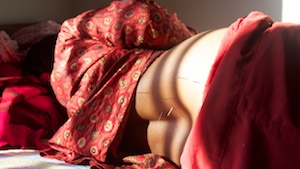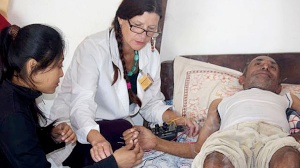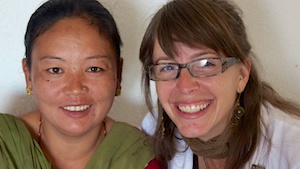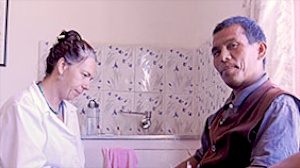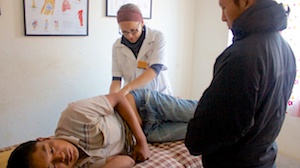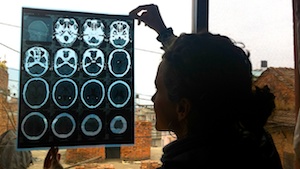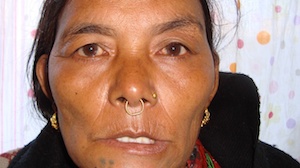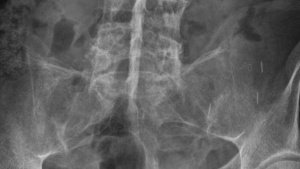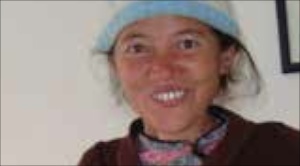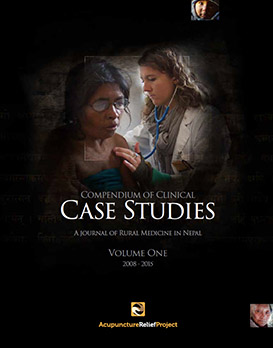Tiffany Forster LAc
March 2015
OVERVIEW

15-year-old female presents with purulent, non-healing ulcers in the right ear canal. After 20 treatments, using an integrative approach that included Chinese herbal medicine, acupuncture and antibiotics, the patient experienced a reduction of pus, reduced pain and itchiness. However, the condition did not resolve. The treatment and investigation became directed towards possible skin staphylococcus, otomycosis (a skin fungal infection), skin tuberculosis and acquired cholesteatoma. A referral for further investigation is necessary for a definitive diagnosis.
Subjective
15-year-old patient presents with non-healing, suppurative ulcers of the right, external ear canal. The patient reports she has an 8-year history of upper respiratory tract infections (URTI) and ear infections with the ear ulcers. With the use of an unknown quantity of antibiotics and eardrops, there has been no resolution of the ulcers. The ulcers developed to this severe stage 1 year ago and have gotten continually worse. She reports intermittent pain and itchiness with constant, copious amounts of thick, sticky pus. The hearing in the right ear is diminished. The submandibular glands are occasionally swollen bilaterally. She suffers from intermittent headaches. The patient does not show any symptoms of an acute infection, as there is no fever, intense pain, painful swollen glands or an acute sore throat.
Objective
On first inspection of the ear canal, an accumulation of chronic, inflammatory cells are evident with a copious amount of pus being produced. Initially, the tympanic membrane is not visible.
The location of the ulcers are a third of the way down the ear canal at 5 o’clock with a bigger ulcer half way down at 12 o’clock. They are inflamed, suppurative and crater-like with a definite circumference.
With consistent treatment, the less deep ulcers clear to expose a larger ulcer at the end of the ear canal at 1 o’clock. It appears to be partially covering the tympanic membrane. It is unclear if the tympanic membrane is affected. Upon asking if the patient can taste the vinegar being used to alter the environment of the ear, she claims she cannot, indicating tympanic membrane is intact.
Upon inspection of the left ear, no redness is observed, nor associated pain or itchiness noted. The tympanic membrane is intact.
TB mantoux test and TB sputum test – both negative; For a definitive result, a skin biopsy and pus culture is necessary. The pus culture determines which bacteria is present in order to find the antibiogram, which can determine a bacteria’s sensitivity to an antibiotic.
Initially, when cleaning the debris in the ear, up to 10 cotton swabs were necessary. After 15 treatments, only 2-4 cotton swabs were used, indicating a significant reduction in pus secretion.
Assessment
DX: Non-healing, suppurative ulcers of the right external ear canal
The body’s ability to heal the ulcers is compromised due to the location at the deep end of the external ear canal, poor visibility and difficult access, and the chronic nature of the disease. The ulcers respond to the antibiotics and antifungals, but do not heal completely. Possibly, the wound has become antibiotic-resistant over the years. An infection of the middle ear cannot be ruled out, as it is impossible to investigate under the circumstances.
Possible cutaneous staphylococcus infection: A culture is required to identify.
Otomycosis: Fungal infection of the external ear canal; Malodorous discharge, inflammation, scaling, severe discomfort and itchiness with minimal pain characterize fungal infections. A culture is required to identify for exact diagnosis and appropriate treatment.
Skin TB: Non-healing wound is the main symptom of skin TB. Characteristic histopathological features on skin biopsy and pus culture confirm the diagnosis.
The patient experiences a combination of all of the above symptoms at differing times. Further testing is required for complete and accurate diagnosis.
Acquired cholesteatoma: Cholesteamtoma can give rise to a number of appearances. If there is substantial inflammation, the tympanic membrane may be partially obscured by an aural polyp. The presentation of this disease penetrates into the middle ear and should be considered. Further analysis is recommended to rule out potential for this condition
TCM DX: Chronic, turbid, damp-heat in the external ear canal
It is most likely that the ulcers began with a channel pathology of an external invasion. Over time, the chronic and damp nature of the condition has become more systemic.
Lung qi and wei qi are affected due to the history of URTI. The Lung system is the most exterior organ and is the first internal organ typically affected by external pathogens. The Lung system includes the skin and is associated with wei qi. As the wei qi becomes weakened, the body’s ability to have a strong defense becomes negatively affected.
Spleen and Stomach qi deficiency due to the chronic nature of the condition. One of the Spleen’s functions is to identify the turbid and to transform and transport this pathogen. The Spleen also produces and stores white blood cells that clean bacteria from the blood. This function is important in tissue regeneration and in stimulating an immune response in the body. The cold nature of antibiotics damages the Spleen and thus the ability to be effective in healing the chronic nature of the ulcers.
Prognosis
Poor prognosis without the skin biopsy and pus culture to identify the pathogen as bacterial, fungal, skin TB or drug-resistant skin TB. Infection is the single most likely cause for the delay in healing. The inflammatory phase has become prolonged because of the chronic nature of the condition. With ineffective, yet consistent treatment, both internally and externally, surgery is recommended because of the excessive granulation of the tissue that is hindering the re-epithelialization of the local area. Alternatively, with the confirmation of skin TB, the healing will occur with the use of appropriate medication. The potential for a good prognosis is possible if the above recommendations are followed.
Treatment
Due to the chronic nature of the ear ulcers, therapy is adjusted throughout the process. Treatment is according to the nature of what the patient is reporting and how they present over the course of 1 month. Below is an outline of the sequential treatments.
The following is done at every treatment from the beginning.
- Acupuncture: Ear tacks applied every 2- 3 days to San Jiao 17 and 21, Gallbladder 2 and Small Intestine 19. These points are used locally to activate circulation and decrease inflammation.
The following occurred at the same time. The pus decreased before plateauing and never fully resolved.
- Internal antibiotic Chinese herbal medicine (CHM) Huang Liang Jie Du Tang 7 days
- External antibiotic CHM Huang Liang Jie Du Tang mixed with Neosporin 10 days alternating days
- Aural saline flush on alternate days for 7 days
After the above stopped working, the following was prescribed.
– Azithromycin, 500mg PO for 5 days
– Aural vinegar flush on alternate days for 8 days
– Cloxacillin, 1gm TID for 7 days
Once the antibiotics stopped working, a fungal approach was taken.
– Antifungal ear drops 4 drops TID for I month
– Fluconazole 150 mg PO once per day for 3 days, then once per week for 3 weeks
The following was prescribed to support the digestive system.
– Internal CHM Si Jun Zi Tang taken over the 4 weeks of treatment
The following was prescribed at the end of the treatment plan to help boost the immune support and aid the ear.
– 50% colloidal silver/50% rubbing alcohol ear flush, 4 times per week for 2 weeks
– Multi vitamin and 500mg vitamin C taken daily – long term
Outcome
After the initial 5 treatments, it became obvious that the ulcers were difficult to heal and would require different approaches in the attempt. Through the observation of changes over a series of 20 treatments, the plan was adjusted 3 times. The patient reported decreased itchiness, pain and discharge. As soon as the medicines were completed, however, the itchiness reappeared, but to a lesser degree. The discharge also increased, but to a lesser degree than when she initially started treatment. All of this was indicative that the ulcers were still present.
Ongoing Treatment
The patient and her family were informed that further investigation was necessary. With the consistent treatment that she had been receiving, to act on the referral that had been given would ensure the resolution of the non-healing ulcers. To continue using the antifungal eardrops, taking a multi-vitamin and extra vitamin C would be beneficial in the support of her immune system.
Conclusion
This has been an interesting and important case, as it not only demonstrates the efficacy of using an integrative approach, but it also highlights the ability of acupuncture to serve as an initial access point of care in which the patient received regular treatments and the opportunity to closely follow her progress and therefore prognosis. Significant improvement has been achieved, clearing the way for the definitive understanding that a referral to the appropriate hospital is necessary. A referral for investigation and/or surgery has been written bringing attention to the patient’s lower income status. This is imperative for the family so they are not subjected to unnecessary financial burden. This can, otherwise, have a significant effect on the family not following through with the investigation necessary for the ulcers to resolve.












